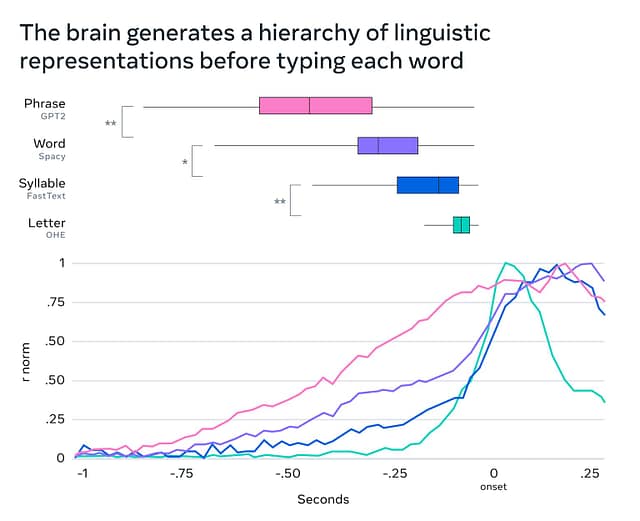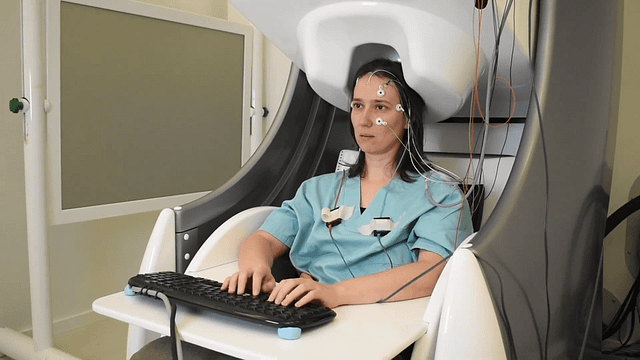Meta has launched a groundbreaking AI system capable of converting thoughts into text input with up to 80% accuracy. However, the technology currently requires a massive, non-portable brain scanner and controlled laboratory conditions to function effectively.
Research Background
Meta’s collaboration with the Basque Center on Cognition, Brain and Language (BCBL) has made significant strides in non-invasive brain-to-text communication. The study involved 35 healthy volunteers at BCBL, using magnetoencephalography (MEG) and electroencephalography (EEG) to record brain activity while participants typed sentences.
Researchers then trained an AI model to reconstruct these sentences solely from the recorded brain signals, achieving up to 80% accuracy in decoding characters from MEG recordings, which is at least twice the performance of traditional EEG systems.
This research builds upon Meta’s previous work in decoding image and speech perception from brain activity, now extending to sentence generation. The study’s success opens new possibilities for non-invasive brain-computer interfaces, potentially aiding in restoring communication for individuals who have lost the ability to speak.
However, challenges remain, including the need for further improvements in decoding performance and addressing the practical limitations of MEG technology, such as requiring subjects to remain still in a magnetically shielded room.
Brain-to-Keyboard Technology

The Brain2Qwerty system captures neural activity using a large magnetoencephalography (MEG) scanner, which detects magnetic signals produced by brain cells during the thought process. This non-invasive method allows the system to capture 1,000 snapshots of the brain per second, enabling it to identify the precise moments when thoughts translate into words, syllables, and individual characters.
Once the brain signals are captured, a sophisticated deep learning model analyzes the data and maps it to specific keystrokes. The AI has been trained on thousands of characters typed by volunteers, allowing it to recognize patterns in brain activity associated with different letters and words. This process culminates in the AI generating on-screen text that corresponds to the user’s thoughts, with accuracy rates up to 80%.
The system’s ability to decode both EEG and MEG signals makes it a versatile tool for brain-computer interface research.
Future Potential of Brain-Computer Interfaces
Despite current limitations, Brain2Qwerty’s success paves the way for future applications of brain-computer interfaces (BCIs). In the medical field, this technology could revolutionize the treatment of brain injuries and neurological disorders, potentially restoring communication abilities for patients with conditions like locked-in syndrome.
The research also offers valuable insights into language processing and thought-to-speech conversion, enhancing our understanding of cognitive neuroscience. As the technology evolves, it may lead to more accessible assistive devices for individuals with physical limitations, enabling new forms of human-computer interaction.
Although practical, everyday use remains distant, Meta’s continued investment in this field indicates a strategic push towards deeper integration of AI and neuroscience, which may transform how we interact with technology in the future.
Brain-to-Keyboard Challenges

Despite representing a significant advancement in brain-computer interface technology, Brain2Qwerty faces several challenges that limit its practical application:
- Volume and Cost: The system relies on a half-ton MEG scanner costing approximately $2 million, making it difficult to use widely.
- Lack of Portability: The equipment is about the size of a refrigerator and requires a specially shielded room for proper operation.
- Sensitivity to Movement: Even slight head movements can significantly reduce the system’s accuracy, requiring users to remain almost completely still.
- Controlled Environment: Optimal performance requires a magnetically shielded room to block the Earth’s magnetic field, further limiting its real-world applicability.
These limitations confine Brain2Qwerty to laboratory settings, highlighting the significant obstacles that must be overcome before such technology can be adapted for everyday use.








